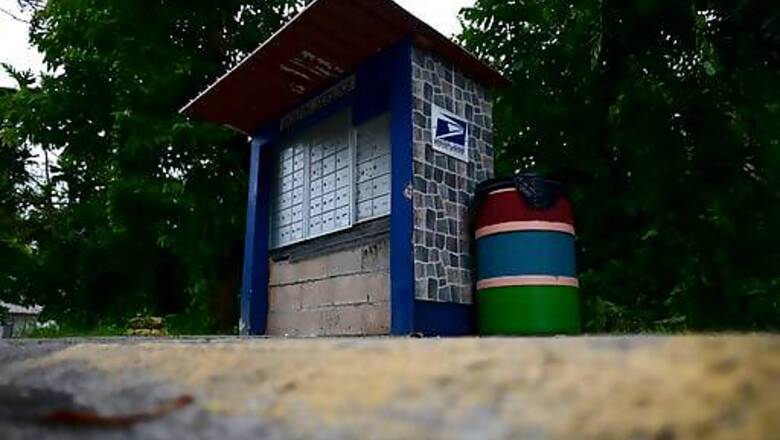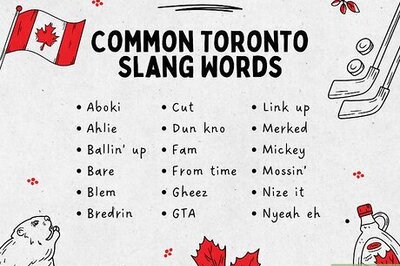
views
CAGUAS, Puerto Rico: Firefighters in this city near Puerto Ricos capital cheered when they recently got updated maps that include rural neighborhoods, confessing they sometimes had to rely on taxi drivers for directions during emergencies. That’s because more than 300,000 homes on the island have no formal address.
The absence of street names and numbers across the island has long been a problem for the U.S. territory, where internet map services sometimes fail. Directions can involve a mango tree, or a bakery or a house of a certain color. It’s even a problem in urban areas, like one district of the capital, San Juan, where some people rely on a life-size Bigfoot doll on a balcony as a reference point for directions to a hospital.
It’s not unusual to hear something like: Turn right at kilometer 58 and make a left after a large hole. If you go past the big breadfruit tree, you’ve gone too far.
Oso Blanco prison, nicknamed the Alcatraz of the Caribbean where hundreds of inmates were killed, is still used as a reference point even though crews demolished it long ago.
So getting lost has long been an acceptable and occasional fun part of island life for some, but the coronavirus pandemic, a recent series of earthquakes and increasingly active hurricane seasons are prodding authorities to resolve the problem. Without an address, emergency responders cannot find people quickly or deliver basic supplies or medical care when up to 60% of homes in some municipalities lack one.
If youre not on a map, you dont exist, said Ral Ros, a former manager at the U.S. Postal Service who now leads iCasaPR, a nonprofit group that aims to standardize addresses on the island.
Puerto Ricos 78 municipalities and dozens of government agencies still use separate databases that use different names for the same streets or list the same addresses in varying ways, such as 1013 or 10-13. Its like the Tower of Babel, Ros said.
Four years ago, a young boy died in San Juan because it took an ambulance 15 minutes to find the apartment in a complex that did not have a standardized address, said Nazario Lugo, the president of Puerto Rico’s Association of Emergency Responders who was the citys emergency management director at the time. And the mother could not go outside to flag down emergency responders because she was following CPR directions from the 911 operator, he said.
The problem is so widespread the government even recommends that a home emergency plan include designating someone to go out to a main road to flag down emergency responders.
As in other cities, officials here in Caguas want to avoid such tragedies.
Over the past decade, more than 100 roads have been named for the first time, but there are many more that need identities and it’s not always easy, said Carmen Daz, auxiliary planning director. Street names have to be unique and they are limited to 28 characters, so to help neighborhoods come up with ideas Daz bought books on Puerto Rican plants and animals, novels by famous local authors and even suggested the name of the song Calma by Puerto Rican pop singer Pedro Cap.
Daz said the practice of using landmarks to give directions is not sustainable: Theyve already changed the color of that pink house or cut down that tree.
It’s those types of directions that Caguas resident Luz Martnez used to rely on before her neighborhood got street names and house numbers. She even told visitors to ask for her well-known neighbor Nazario if they got lost en route to her house.
It was very complicated, she said.
As president of La Unin community, Martnez held a vote on potential street names. Among the winners: Jos Daz Dede, who ran an informal grocery delivery service, and Antonia Daz, who campaigned to pave their streets.
Jos Daz Dede learned his name won while in a nursing home, but he died before he could see the sign go up. Antonia Daz, who is 106, still lives on the street named for her.
Not everyone, though, wants to be on a map. Ros said some people resist because they have added a swimming pool or other feature to their home without permits. Others simply want to live off the grid. And many people have their official addresses listed as post office boxes with clusters of rusting boxes dotting rural routes around the island and don’t want to have to switch to a new address.
Disclaimer: This post has been auto-published from an agency feed without any modifications to the text and has not been reviewed by an editor
Read all the Latest News and Breaking News here



















Comments
0 comment